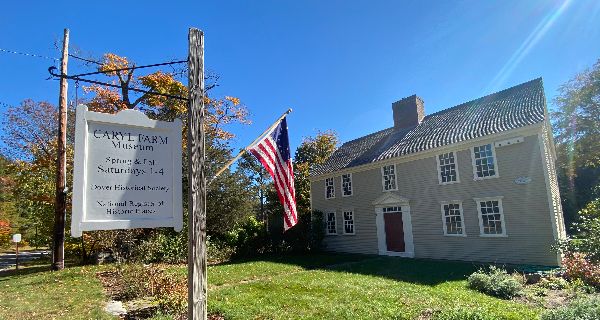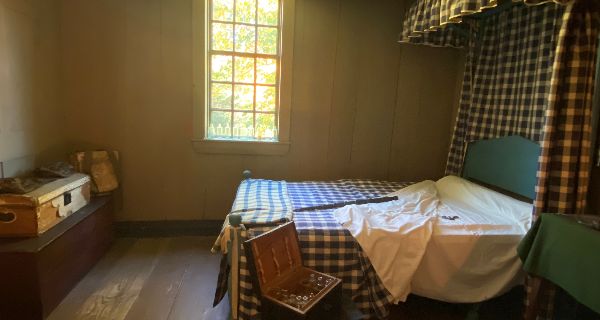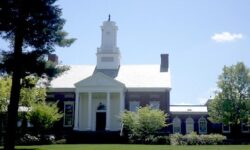By Lauren Schiavone
Hometown Weekly Staff
Located on Dedham Street in Dover, the Benjamin Caryl House is one of Dover’s most iconic historical landmarks — and a treat to visit on a free Saturday.
The home first belonged to the town’s first minister, Benjamin Caryl, and his family, as they lived there starting from approximately 1774, through the American Revolution, and through four generations.
Though the house was robbed after the youngest daughter, Ellen Miller, passed away in 1897, many original pieces from the original Caryl House still remain. Additionally, its framework has not been significantly altered, and the house remains in good condition.
“It’s pretty unique in that it was built by and lived in by one family,” said Museum Curator Kevin Shale. “It was left to the town as a kind of time capsule. It is an opportunity to show what one family lived in through four different generations.”
Shale was kind enough to give a tour. Starting with the home’s most central locale, the kitchen was where daily activities would be conducted. The room was up for a full baking day, with loaves of bread, pies, and a beehive oven by the hearth. Shale made it known that chores and housework took an entire day to complete, and also shared that women contributed excessive amounts of toil at home — so much so that even when birthing children, their rooms were set up with a clear view of the kitchen so they could give orders whilst resting in bed.
Benjamin Caryl was well-liked by townspeople. Growing up in poverty, he was said to only have four books. He taught promising young students of the parish at home. Upstairs, a desk in his bedroom is where he would teach his lessons. There are no photographs of Benjamin Caryl, though he is highly spoken of in letters and records.
Dr. George Caryl, the Reverend’s son, lived in the house and practiced medicine until his death in 1822. Upstairs, daughter Ann Caryl Miller’s original artwork still remains. “Ann was a fan of scherenschnitte, an elaborate form of papercrafting,” explained Shale. Intricate paper cutouts of weeping willows and detailed memorials remain in Miller’s bedroom. “We’re lucky these survived, being paper,” he reminded. Two notable pieces include a memorial for Dr. George Caryl and another for Union soldiers.
Also upstairs on this particular day, Barbara Provest, a known member of the Weaver’s Guild of Boston, sat by another original Caryl item, a linen loom. “This is a linen loom.” she explained. “It has this hole here so you didn’t lean up against the linen and abrade it.” With over forty years of experience weaving expertise to share, Provest’s insight was very welcome. “Right after the Revolutionary War, it became very patriotic to have your own loom and weave, as you were trying to get away from textiles,” she further explained.
Both Shale and Provest’s passion for restoring and preserving the integrity of Dover’s past were fully evident, and the house itself is a must-see for both Dover residents and out-of-towners seeking an enriching historical experience.
The Benjamin Caryl House is open for public viewing in the fall on Saturdays from 1-4 p.m. For further information, visit www.doverhistoricalsociety.org.























